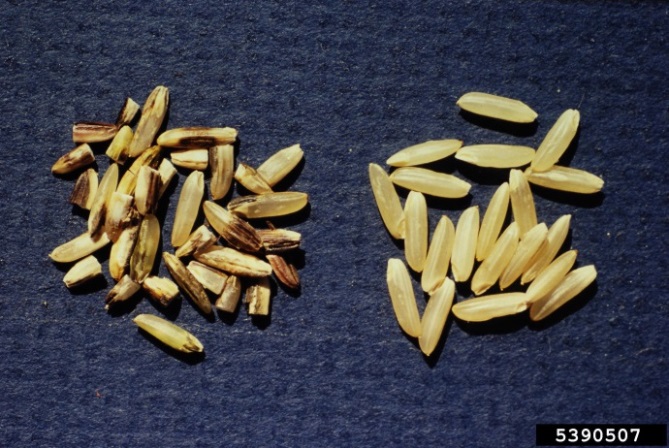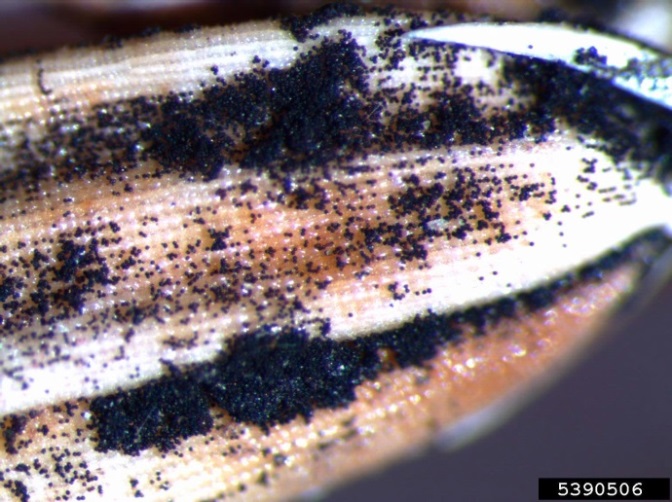
Kernel smut of rice
| Primefact number | Edition | Published | Author |
|---|---|---|---|
| 1214 | Second | Aug 2017 | Plant Biosecurity and Product Integrity |


Kernel smut of rice (Tilletia horrida) is an exotic plant pest not present in Australia. This disease is a serious threat to Australia’s rice industry.
Notifiable status
Kernel smut of rice (Tilletia horrida) is a notifiable plant disease in NSW.
All notifiable plant pests and diseases must be reported within 1 working day. You can report notifiable plant pests and diseases by one of the following methods:
- Call the Exotic Plant Pest Hotline 1800 084 881
- Email biosecurity@dpi.nsw.gov.au with a clear photo and your contact details
- Complete an online form
A full list of notifiable plant pests and diseases can be found in Schedule 2 of the NSW Biosecurity Act 2015.
Description
Kernel smut of rice is caused by the fungus Tilletia horrida synonym Neovossia horrida.
Kernel smut of rice reduces grain quality by producing black, sooty masses of powdery spores which replace all or part of the grain (Figure 1). Some strains of the fungus produce toxins which taint milled grain.
Symptoms
Kernel smut of rice is most evident at crop maturity. Black masses of spores replace the grain and burst out through the hulls (Figure 2).
Dislodged spores from infected grains settle on other plant parts forming a characteristic black dusty coating. During harvest black clouds of spores can be released into the air and cover the machinery and equipment.
Lifecycle
The fungus survives as spores in the soil and in infected seed. Germinating spores infect immature developing rice grains. The fungus replaces the endosperm of the grain with a mass of black spores.
The kernel smut of rice fungus is not systemic. Flowers are infected individually by wind-borne spores and only a few florets in a panicle may be infected.
Hosts
Kernel smut infects rice (Oryza sativa) and grasses in the genera Brachiaria, Digitaria, Eriochloa, Panicum and Pennisetum.
Spread
Wind-borne spread of kernel smut of rice spores infects and reinfects rice panicles both within a crop and into neighbouring crops.
Long distance spread occurs when spores of the fungus are transported on infected and contaminated grain, machinery and equipment.
Spores of kernel smut of rice are able to float on water and may be spread this way.
Distribution
Kernel smut of rice occurs in most rice producing countries including Burma, China, India, Indonesia, Japan, Korea, Mexico, the Philippines, Senegal and the USA.
Kernel smut of rice is not present in Australia.
Actions to minimise risks
Put in place biosecurity best practice actions to prevent entry, establishment and spread of pests and disease:
- practice “Come clean, Go clean”
- ensure all staff and visitors are instructed in and adhere to your business management hygiene requirements
- source propagation material of a known high health status from reputable suppliers
- keep records

